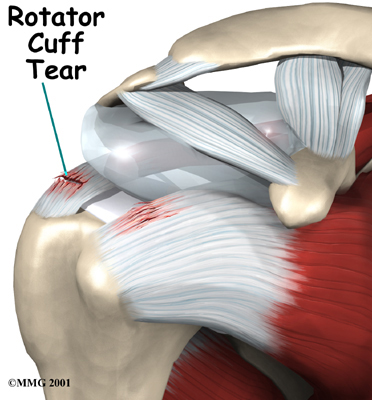Greetings
We promise… spring is coming! With the “hopefully-soon” change in weather, we tend to become more active, start the spring cleaning process and can end up with shoulder pain and strains. With this in mind, our newsletter this month is focused on rotator cuff injuries, and what to do if you have one.

Many of us have experienced shoulder pain or stiffness at some point in time. Simple everyday activities like sleeping, changing your clothes or bathing can be uncomfortable or even impossible. These significant, but often understated symptoms are signs of irritation to the tendons and muscles that help connect the upper arm bone with the shoulder blade and the rest of the body.
Although rotator cuff issues are often caused by the types of repetitive overhead motions used during sports like baseball, tennis and racquetball, they can also be caused by repetitive work-related stress and strain. Rotator cuff issues can also be caused by poor posture, injury due to falling, or simply due to the everyday muscle and tendon wear and tear that comes with the aging process.
Shoulder pains and stiffness can be the result of irritation to many tissues in the shoulder: inflammation of the tendons (tendonitis), inflammation of the fluid-filled sacs between tendons and the shoulder blade (bursitis), or due to irritation to the tendon without inflammation (tendonosis).
Fortunately, physiotherapy can significantly improve your movement and help with the pain or stiffness. After a complete and thorough assessment by a Peak Physical Therapy physiotherapist, you’ll understand the causes of your shoulder pain and what to do about it. Depending on the assessment findings and your treatment goals, the following treatment options may be recommended to help improve function and relieve pain:
1. Manual Therapy
Using manual therapy techniques, your Peak physiotherapist can help to stretch out tight tissues, re-align the joint and reduce pain.
2. Stretching Exercises
Motion is lotion! The shoulder is designed to be very mobile, and with an injury it can tighten up in a hurry. Your Peak physiotherapist may prescribe you a variety of range of motion exercises to help you regain your normal amount of movement.
3. Stability and Postural Exercises
You can’t build a house without a stable foundation! The more stability and proper alignment in the body, the more you will improve. Your Peak physiotherapist will teach you specific exercises to help correct your shoulder and trunk position, which will help with the alignment of the rotator cuff tissues, which allows them to support the weight of the arm with movement.
4. Strengthening Exercises
Shoulder strengthening exercises will be taught as well. This will help you get back to your normal, and prevent re-injury. They will include a variety of back, shoulder, shoulder blade and arm exercises.
By combining stretching and strengthening exercises into a personalized regimen, physiotherapists are capable of significantly reducing the recovery time following a shoulder injury. Although a variety of exercises will be recommended for patients to complete at home, studies have shown that the specialized supervision of a trained physiotherapist allows for a significantly better recovery after shoulder injury.
For more information on how physiotherapy can effectively help with rotator cuff issues, please contact the trained and licensed physiotherapists at Peak Physical Therapy. We would be pleased to examine your shoulder, and develop a personalized physical therapeutic treatment plan that specifically addresses your needs.
Read more on rotator cuff tears here.
Peak Physical Therapy: “Helping you every step of the way!”